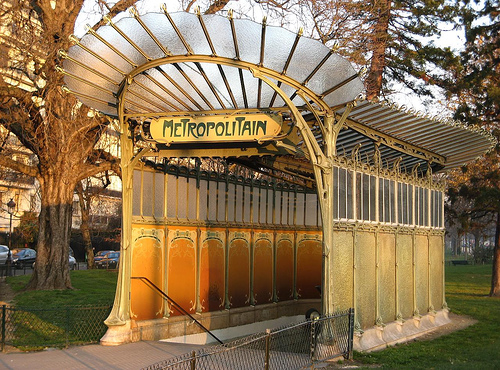 Railroads and subways. (Porte Dauphine Metro in Paris)
Railroads and subways. (Porte Dauphine Metro in Paris) Department stores. (Carson, Pririe, Scott Building, Chicago)
Department stores. (Carson, Pririe, Scott Building, Chicago)With new buildings such as these came expected resistance: one common belief held at the time was that the human body would implode if it went faster than 35 miles per hour, which was the fastest speed that one could go on a horse at the time. Trains debunked that myth, and department stores revolutionized commerce by allowing goods of every type, from household to footwear to clothing, to be sold in one convenient location.
One particularly noteworthy experiment that occurred in this time period was the Ferris Wheel, invented by George Ferris and featured at the 1893 World's Fair in Chicago. The Wheel consisted of two 140-foot steel towers, a 45-foot axle, a wheel 250 feet in diameter and 825 feet in circumference, and was powered by two 1000-horsepower engines that allowed the wheel to complete one revolution every 20 minutes.
 The original Ferris Wheel, which cost fifty cents to ride. Each car could handle approximately sixty people.
The original Ferris Wheel, which cost fifty cents to ride. Each car could handle approximately sixty people.Although the original Ferris Wheel shown was destroyed in 1906, Ferris's legacy can be seen in most amusement parks today. Most theme parks and carnivals that I have seen have some sort of Ferris Wheel. Currently, the world's largest Ferris Wheel is the Singapore Flyer in Southeast Asia. At 165 meters high, it stands next to Marina Bay, allowing for breathtaking views of the surrounding city at night.
 The Singapore Flyer.
The Singapore Flyer.
No comments:
Post a Comment